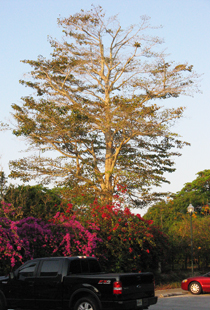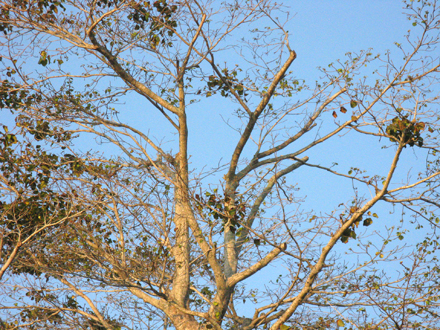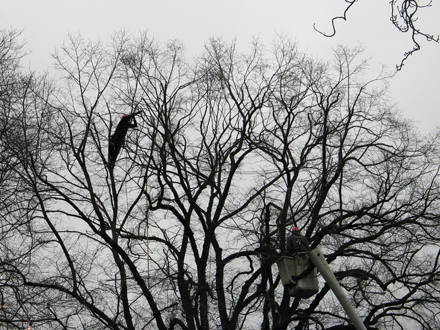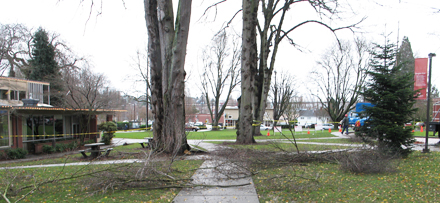Home > Pruning shade trees > Mature trees > Reducing large tree example
Reducing large tree example
The large diameter branches on this large tree were recently shortened in order to reduce likelihood of the tree over-turning or breaking in storms. This technique can be used as a method of preserving large trees in areas prone to storms or where a large tree has a defective root system.
Close-up (below) of top of tree shows several reduction cuts 2 to 4 inches in diameter. Force of the wind on the top portion of the crown is reduced with this treatment. |
 |
|
|
Reduction of the 100' tall American elm on the right side of the photo shown on the right is amost complete. As a comparison, the tree to the left has not been pruned. These trees are in a region that experiences regular wind events in winter of more than 60 mph, sometimes much stronger. This pruning methods will reduce the wind force on the top portion of the canopy, thuse reducing the moment along the trunk and at the base of the tree. Elm photos courtesy Scott Baker. |
Elm on right in process of reduction
|
Close-up of the top of the tree shows dozens of reduction cuts 2 to 3 inches in diameter. This strategy reduces tree height and thins the canopy edge. |
|
Most removed branches were 2 to 3 inches in diameter and 12 to 20 feet long. |
|





